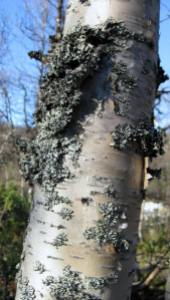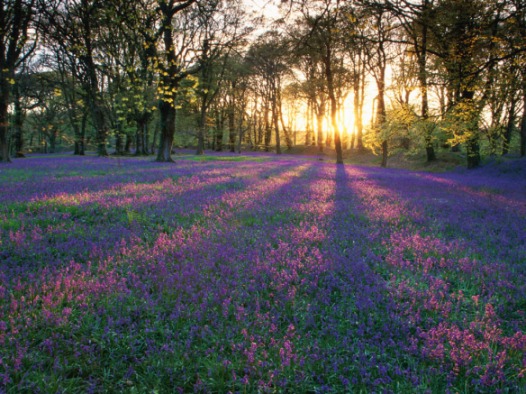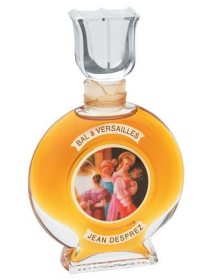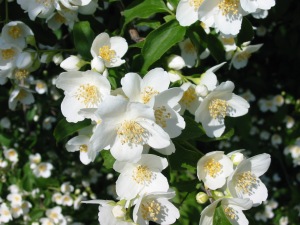I’m a huge fan of Serge Lutens and his fragrances, even when I can’t wear them. To me, there is no other perfumer who seems so genuinely intellectual as a person, so philosophically theoretical and inquisitive, and so damn original across the broad range of his fragrances. Serge Lutens and his perfumes fascinate me on every level, and I constantly find myself intellectually engaged by what he’s trying to do, as well as often being emotionally touched by what he actually creates, even when I can’t wear them, find some fault with them, or am left undecided and completely confused as to what I actually think…. (Datura Noir, I’m looking straight at you for that last one!)
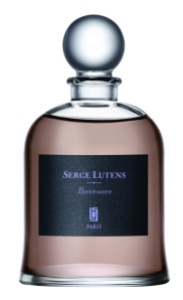 Boxeuses is another Lutens perfume that fascinates me. It’s not one that I love, or that ultimately worked very well for me, but I deeply admire it. It evoked a sharply divergent set of impressions — from Rasputin fleeing a dacha in the woods to, structurally, a sandwich — but, as always with Serge Lutens, it made me think. I cannot tell you how rare that is for me when it comes to perfumery. Boxeuses was released in 2010 and is the creation of Lutens’ favorite cohort in olfactory adventures, Christopher Sheldrake. Its description — like all of Lutens’ descriptions — is a fun, intellectual source of amusement. Except for Parfums d’Empire, I think no-one does better stories for their perfumes than “Uncle Serge,” as he is affectionately known in the perfume community. His background tales are frequently a mix between some sort of romantic, whimsical Proustian or Zola-like saga, and Camus-influenced existential angst. They rarely, however, seem to actually encapsulate the feeling or scent of the perfume, in my opinion. And the brief synopsis of Boxeuses on the Lutens website is no exception:
Boxeuses is another Lutens perfume that fascinates me. It’s not one that I love, or that ultimately worked very well for me, but I deeply admire it. It evoked a sharply divergent set of impressions — from Rasputin fleeing a dacha in the woods to, structurally, a sandwich — but, as always with Serge Lutens, it made me think. I cannot tell you how rare that is for me when it comes to perfumery. Boxeuses was released in 2010 and is the creation of Lutens’ favorite cohort in olfactory adventures, Christopher Sheldrake. Its description — like all of Lutens’ descriptions — is a fun, intellectual source of amusement. Except for Parfums d’Empire, I think no-one does better stories for their perfumes than “Uncle Serge,” as he is affectionately known in the perfume community. His background tales are frequently a mix between some sort of romantic, whimsical Proustian or Zola-like saga, and Camus-influenced existential angst. They rarely, however, seem to actually encapsulate the feeling or scent of the perfume, in my opinion. And the brief synopsis of Boxeuses on the Lutens website is no exception:
Now’s the time to fight.
To get the idea, think of Russian leather tanned on birch bark.
Now add animalic notes, strong enough to suggest a black eye.
In other words, it’s time to see stars!
“Boxeuses” translates to women boxers in English, but I have to say that was the last thing that came to mind when I smelled the perfume. As for the notes, Serge Lutens almost never provides a list, so it’s a little bit of a guessing game as to what Boxeuses actually contains. Compiling the elements from Fragrantica, Surrender to Chance, and the Perfume Shrine, the list would seem to be:
Leather, licorice, birch tar, fruit, plum, violet, cedar, styrax, incense, spices, cade oil.
Boxeuses opens on my skin with a bouquet of notes that are so dark purple, they verge on black: plum molasses; violet cherry cola; black licorice; leathery, black fig compote; and sweet dried fruits topped by heaping dollops of prune over a richly resinous, smoky base. Birch tar is a huge part of that base with its tarry, smoky character. It’s a hard aroma to describe if you’ve never smelled it, especially as it’s quite different here from the way I’ve encountered it before. It’s not mentholated, not like eucalyptus, not like diesel, not like rubber, and not chilly — and, yet, it almost feels like all of it. It never seems like pure leather to me but, rather, like extremely gooey, black, resinous molasses, filled with a dark, pungent, almost sharp smoke that has a diesel-like undertone to it. The molasses smells like the thickest concentration of stewed prunes, plums and black figs. I have no idea if black figs are actually in Boxeuses, but something about that sticky foundation smells like the grainy, densely sweet, slightly spiced, slightly leathered, earthy aspects of thick, Black Mission fig jam.

Fig Jam. Source: Bettycupcakes.com (For recipe for homemade fig jam, click on photo. Link to website imbedded within.)
The real key to Boxeuses, however, comes from the birch tar and cade elements in conjunction with that fruit. As the Perfume Shrine explains in an article on ingredients often used in leather perfumes, birch tar has a very smoky, tarry, phenolic character and was frequently used by Russian or Finnish tanneries to treat leather. It’s a key part of leather perfumes like the legendary Chanel classic, Cuir de Russie. Cade oil comes from juniper trees and has the aroma of a smoky campfire. Those two notes combine with the fruit to create what I can only describe as a jammy-fruited-molasses tar with black smoke and, also, a hugely liqueured edge. It’s as if every dark fruit in the world had been cooked in and then soaked in a wood-infused casket of vodka, cognac and smoky tar, then left to seep and age for 75 years. Sadly, I think I’m still not doing justice to its particular and unusual nuance in Boxeuses.
Five minutes into the perfume’s development, the leather aspect starts to rise a little from the depths of that smoky, fruity, dark molasses base. It’s never a cold, raw, harsh leather; nothing about it feels black or steely. This is a fruit-soaked, jammy leather tinged with church incense and backed by dark woods. It’s beautiful and, oddly, conjured up Rasputin in my mind. Perhaps it’s the mental association of church frankincense with birch tar — an element so often used to treat the leather boots of Imperial Tsarist officers’ boots — and Cuir de Russie. Whatever the reason, the image which comes to mind is Rasputin, wandering around a birch forest in the snow outside a luxurious Russian dacha. He is followed by women trying to serve him sweet, stewed fruit or to cover him with a leather coat. His clothes reek of church incense and smoke, and he’s completely drunk on some dark fruit liqueur which makes him stumble and lose his way amidst the sea of trees. I grant you, it’s not what I’m suppose to imagine with Boxeuses but, despite all the fruit at the base of the perfume, Boxeuses has a very strong feel of the outdoors and winter, of snow and Russian forests, of campfire smoke and sharp incense.
Twenty minutes in, the perfume shifts a little. Black licorice becomes more prominent, flickering tongues of salt over the campfire flames whose smokiness has increased even more. The dried fruits and the always subtle leather nuance have receded to the background, working their magic from afar and with indirect impact, and leaving the tarry birch woods, church incense and salty black licorice to duke it out at center court. At the forty minute mark, the three are still the most prominent notes, though I somehow smell a salty beeswax element as well.
Then, suddenly, exactly one hour in, Boxeuses suddenly becomes abstract: the notes all morph into one vague, generalized soft accord without a hugely distinctive, individualized character. There is still salty black licorice flickering but now, it’s in the distance along with much else. The perfume feels as though it’s muted and seen through a foggy veil where the overall impression is of very amorphous dark woods with smoke, licorice and some vaguely fruited-molasses elements. Part of the problem is Boxeuses’ sillage on my skin. It’s soft from the start and, on both occasions where I tested the perfume, it started to hover just barely above the skin between the 40 minute and 1 hour marks. It’s such a soft fragrance, it feels abstract. Even during the second test where I applied substantially more, Boxeuses became nondescript quite quickly and much sooner than I had expected. The notes feel so translucent, despite their underlying purple hue, that they lack any distinctiveness.
 And that never changed for the rest of Boxeuses’ limited duration on my skin. Two hours in, the perfume turns into abstract licorice woods. There is still a hint of birch in the background; it’s enough to infuse the licorice note with smoke and to make it take on a slightly burnt aspect. Nonetheless, it feels as though Boxeuses is starting to slowly die on my skin. It gives a few gasps during the third hour, almost like a second wind before death: the jammy, dark, pruney-fig molasses note reappears, joining the smoked licorice element and bringing amber along as a companion. Then, just barely after the fourth hour, Boxeuses gives its final hiccup. It is barely ambered, smoked woods — and nothing more. The exact duration of Boxeuses on my skin in the two tests was: 3 hours and 50 minutes with an average dose; and 4 hours and 30 minutes with a large dose.
And that never changed for the rest of Boxeuses’ limited duration on my skin. Two hours in, the perfume turns into abstract licorice woods. There is still a hint of birch in the background; it’s enough to infuse the licorice note with smoke and to make it take on a slightly burnt aspect. Nonetheless, it feels as though Boxeuses is starting to slowly die on my skin. It gives a few gasps during the third hour, almost like a second wind before death: the jammy, dark, pruney-fig molasses note reappears, joining the smoked licorice element and bringing amber along as a companion. Then, just barely after the fourth hour, Boxeuses gives its final hiccup. It is barely ambered, smoked woods — and nothing more. The exact duration of Boxeuses on my skin in the two tests was: 3 hours and 50 minutes with an average dose; and 4 hours and 30 minutes with a large dose.
Boxeuses’ structure consistently calls to mind a very badly cut sandwich. The top and the bottom — the “bread,” if you will — consist of the plummy-stewed-liqueured-dark molasses. The middle of the sandwich is all black “meat”: black birch tar, black frankincense smoke, and black, salty licorice. The top piece of bread is thick; the bottom one is sliced so thin as to be flimsy and translucent. Separating the “bread” from the “meat” is some sort of layer that brings in elements of both parts. Perhaps we can call it a “mayonnaise” which mixes part of the dark fruited molasses with elements of smoke and birch. It’s the overlap area, if you will, which takes place immediately after the thick opening minutes of liqueured molasses and, also, at the very end when the molasses returns. It may not be the most on-point or perfect analogy, but it’s what comes to mind when I think of the perfume’s evolution.
As you may have gathered, I found Boxeuses to be fascinating, but something about it didn’t sweep me off my feet, even apart from the sillage and longevity issues. To me, Boxeuses was always more of an intriguing intellectual construct. Yet, given the notes, I really should have loved it. For one thing, unlike some very intellectual Lutens creations that I’ve reviewed (like Tubereuse Criminelle, for example), Boxeuses is imminently wearable. I’m not too sure of how versatile it is all year-round, particularly in light of the very cold weather, snowy, winter feel of it, but on the Lutens scale of versatility, this is somewhere in the middle. Not as practical or versatile as my beloved Chergui or the cozy Five O’ Clock au Gingembre, but also not as distinctive as the difficult Tubereuse Criminelle, the rich, patchouli-chocolate Borneo 1834, or the complicated Serge Noire. For me, it falls somewhere in that middle category with De Profundis and Cuir Mauresque. Yet, Boxeuses doesn’t move or interest me anywhere close to those last two perfumes which are huge Lutens favorites of mine. Boxeuses is nice and quite enjoyable, but, at the end of the day, it didn’t really rock my world. It never tugged at me while I was wearing it or make me think, “Wow.” It also didn’t have a huge, lingering effect afterwards where I’d continue to think of the scent days or weeks later.
I’m sorry, Uncle Serge. Please forgive me. I will always be a devout, loyal member of your fan club.



